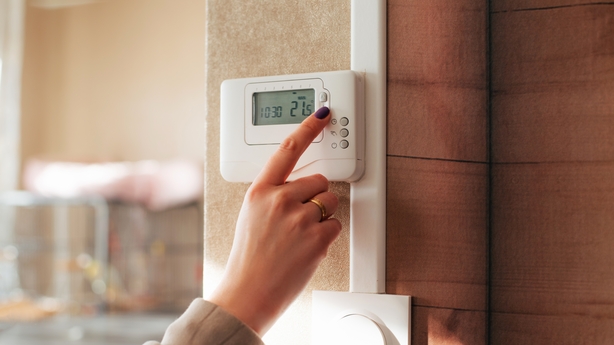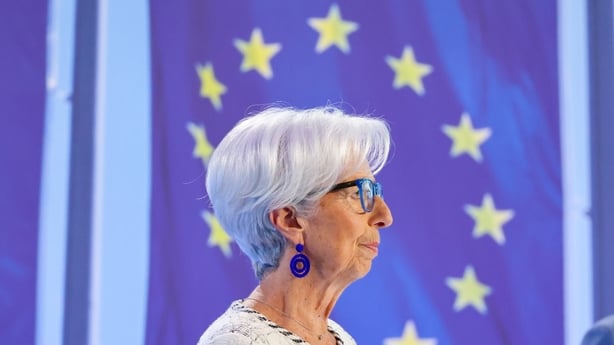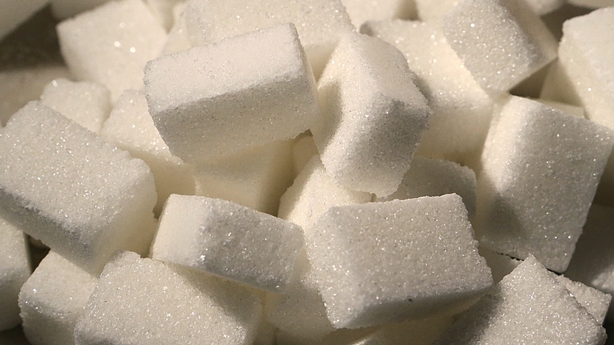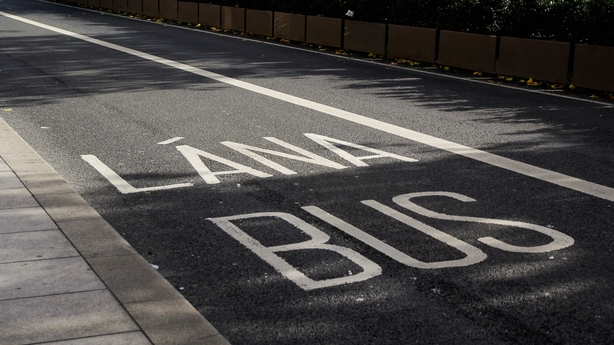Consumer prices rose by 4.9% in the year to August, according to the Central Statistics Office's flash estimate this week.
That’s actually an increase on the rate in the year to July meaning that, having slowed for a number of months, the pace of price rises has actually picked up once again.
It is a flash estimate – so it could be adjusted when the full figures are released later this month – but even if it does change it’s unlikely to be by much. That means it offers a good indication of where prices are going.
Yesterday, meanwhile, Eurostat put euro zone inflation at 5.3% in the year to August. That’s on a par with the rate recorded in July.
Core inflation, meanwhile, which is key to the European Central Bank’s interest rate decision, fell slightly.
But while those figures tell us how much prices have risen by in the past year, they don’t tell us the full story of the inflation we're facing.
24 months and counting
We need your consent to load this rte-player contentWe use rte-player to manage extra content that can set cookies on your device and collect data about your activity. Please review their details and accept them to load the content.Manage Preferences
As all consumers know, we've been dealing with rising prices for more than a year now.
That means that the increases recorded in the latest data are building on top of what we were facing a year or more ago – the price rises are being compounded.
When you trawl back through the CSO data, you can see that high inflation really started to kick in in August 2021.
Consumer prices rose by 2.8% in the year to that month; central banks tend to like to see a rate of 2-ish percent, so it had already gone beyond that at that stage.
And the situation only going worse from that point on.
So how much have prices really risen by?
The most up-to-date, detailed data we have from the CSO brings us to July of this year – so the fairest comparison to make is between July 2021 and July just gone.
When you do that, you see that consumer prices have risen by 15.5% – in just two years.
To put that in real terms – that means that every euro in your pocket is now effectively worth less than 85c, compared to what it would have gotten you two years ago.
Is energy where we've seen the biggest increases?

Yes; it'll be no shock to anyone that energy prices are far and away the big driver of these price increases.
Over the two-year period, natural gas prices have risen by almost 138%, for example.
Electricity prices are up more than 84% – while solid fuels are 57% higher.
Those increases did start as the global economy was coming out of Covid lockdowns, so they build on a time when energy prices were at unusual lows.
But, even with that being the case, they’re still increases that we’ve all had to find the money to cover.
But while energy is the main culprit behind inflation, it’s not the only thing to see big increases.
Even if you exclude energy prices from the inflation figures, you still see a near 13% increase in consumer prices in the past two years.
What else has seen significant price rises in the past two years?

Mortgage interest is one of the big risers during that time – it’s 56% higher than it was in July 2021.
Again, no major surprise, because in the time since then we’ve seen a dramatic rise in the European Central Bank’s interest rate, which is now at its highest point in 23 years.
Tracker mortgages got that passed on straight away, while variable and new fixed customers have been hit to a lesser extent.
And it is somewhat ironic that the ECB’s weapon to drive down inflation is now a contributor to it too.
Elsewhere, in terms of household items, the price of sugar is up more than 49% in the past two years.
Vegetable fats and margarine prices are more than 40% higher – pasta products are up more than 30% in the past two years.
What are the reasons for that?

Higher energy prices will of course have an impact on everything – because if it costs more to run machinery, or more to fuel the truck to transport the raw materials and goods from A to B, then that has to get built in to the end price.
But other things are always at play here too – like climate change.
That’s because changing conditions, or even just unexpected or previously uncommon weather events can impact crops. And even if that happens on the other side of the world, the nature of our supply chains means that can quickly impact prices at Irish tills.
Covid has had an impact – though that is starting to wear off at this stage – as did Brexit, particularly in Ireland.
And we know that many sectors in Ireland are struggling to find staff at the moment – that can impact prices too, because if you don’t have workers to make the products, supply is affected.
Have we seen any prices fall in the past two years?

Yes we have, actually.
The biggest decline in the past two years has been bus fares, which are down 35%.
That’s thanks to the Government’s cost-of-living measure to cut fares on public transport and to cap maximum fares too.
The impact of Government policy can also be seen in childcare – costs there down more than 21% in the past two years; at least for those who can access it.
Motor insurance is down 13.3% in the past two years – with reforms of and pressure on the industry seeming to have some impact.
It is worth remembering, though, that we suffered years of dramatic increases in motor insurance prices, so there’s still a long way to go before they get back to where they would have been before.
According to the CSO, the price of jewellery, clocks and watches is down 28% in the past two years.
The reason for that isn’t obvious – it could be due to the category being a so small that it’s more prone to volatility… or maybe consumers are cutting back on luxury items due to the cost of living, which is forcing price reductions.
Games, toys and hobbies are 8.3% cheaper in the past two years – nightclubs are 8.3% cheaper too… though I think many people might question that figure.
And if you’re looking to save a few euro in your grocery shop, edible offal is one of the few foods that seems to have gone down in price.
It’s 1.4% cheaper now – that’s compared to some significant increases in poultry and beef prices.







